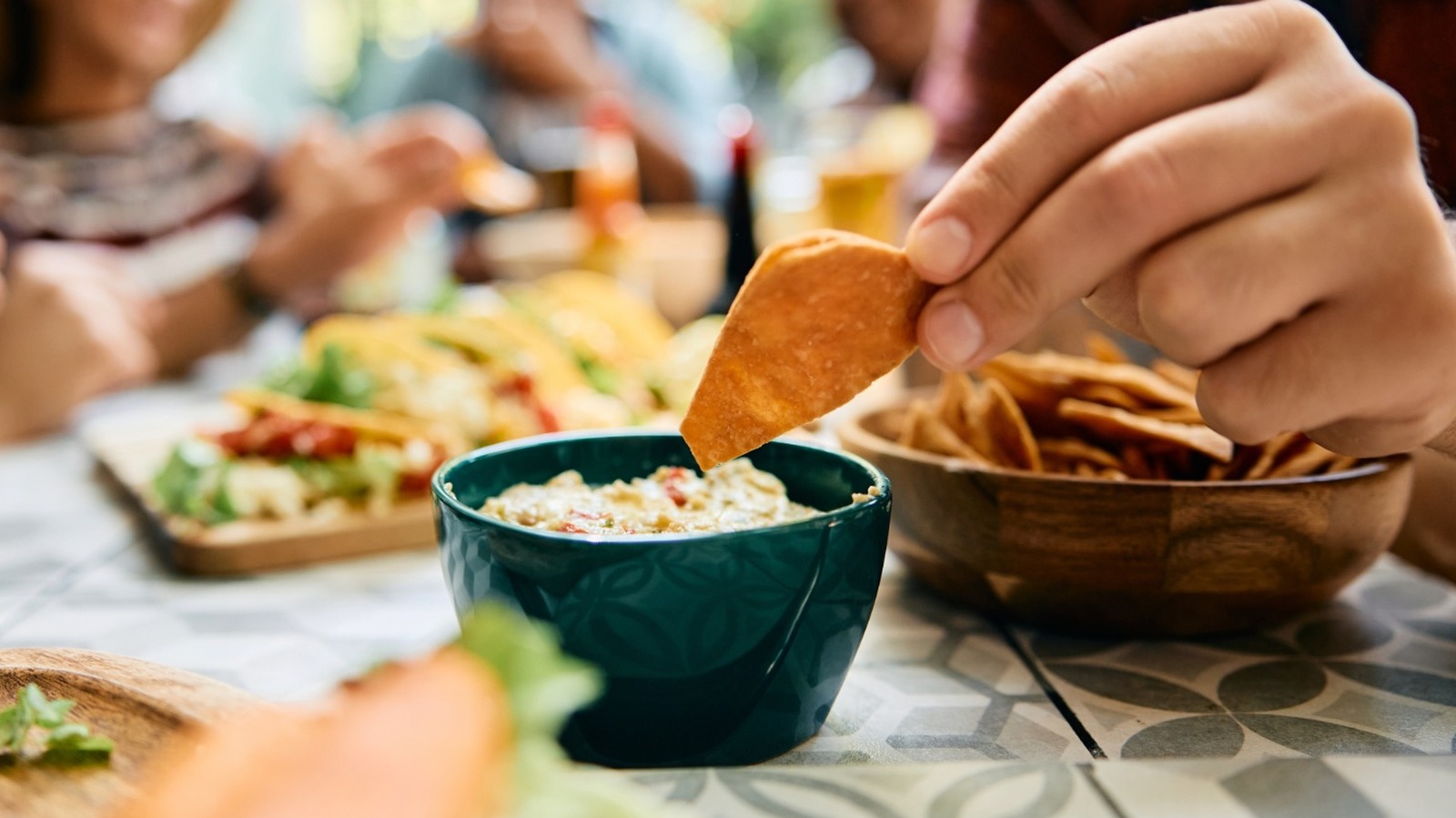
"You're just getting to the good part of the movie when you and see the person next to you bite a nacho, and then dip the remaining half back into the queso - they double dipped. You stare at the bowl of queso and wonder if it's still safe to eat or already laden with bacteria. Lucky for you, science has an answer. Unlucky for your queso, it's probably not the one you want to hear. Double dipping is a one-way ticket to bacteria town."
"On your own, who cares? If you're eating the chips and dip by yourself, then it doesn't matter. Amongst others, however, distaste for double dipping is not just for show. You could be spreading 100 to 1,000 times as much bacteria around that bowl of dip with one single double dip. Do you trust the mouth bacteria of everyone at your party?"
"Your best hope lies in the dip itself. Some dips tend to harbor fewer bacteria than others. One study showed that salsa had more bacteria after a double dip than cheese or chocolate, according to Harvard Medical School. However, the fact remains all three were contaminated with more bacteria after the double dip than before. If a person double dips three to six times, there's a chance for transferring up to 10,000 bacteria."
Double dipping deposits saliva and oral bacteria into communal dip, substantially increasing contamination. Different dips vary in bacterial growth, but salsa, cheese, and chocolate all became more contaminated after double dipping. Casual double dipping can transfer between 50 and 100 bacteria per bite, and multiple double dips can transfer up to 10,000 bacteria. Some dips may harbor fewer bacteria, offering limited mitigation, but contamination risk remains significant when people share a bowl. The practice can spread hundreds to thousands of times more bacteria around a dip bowl, enabling potential transfer of pathogens among partygoers.
Read at Tasting Table
Unable to calculate read time
Collection
[
|
...
]